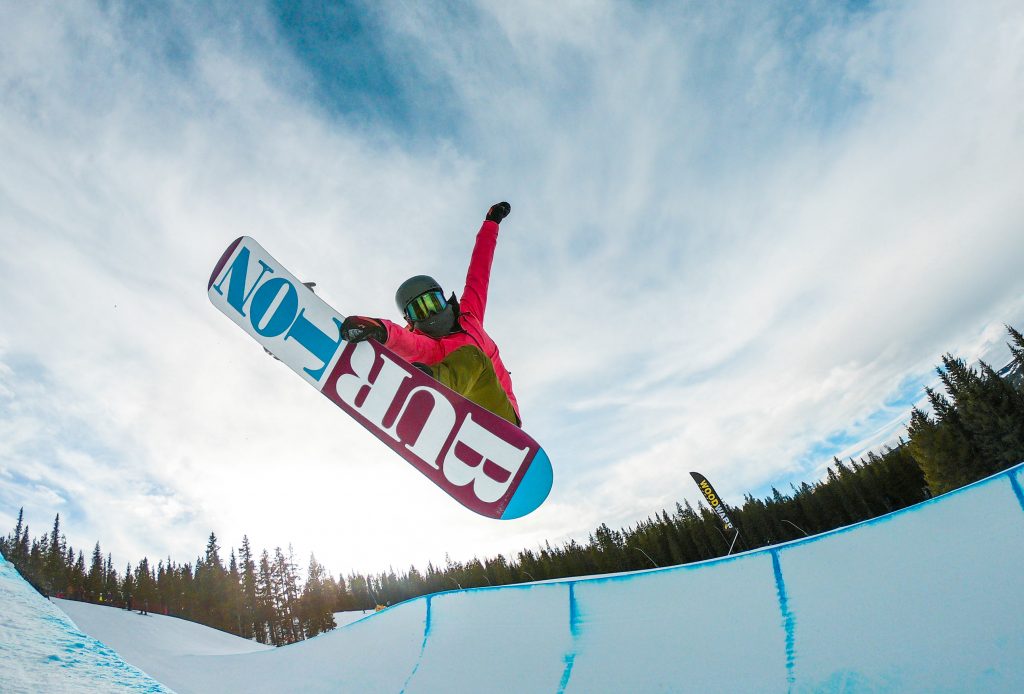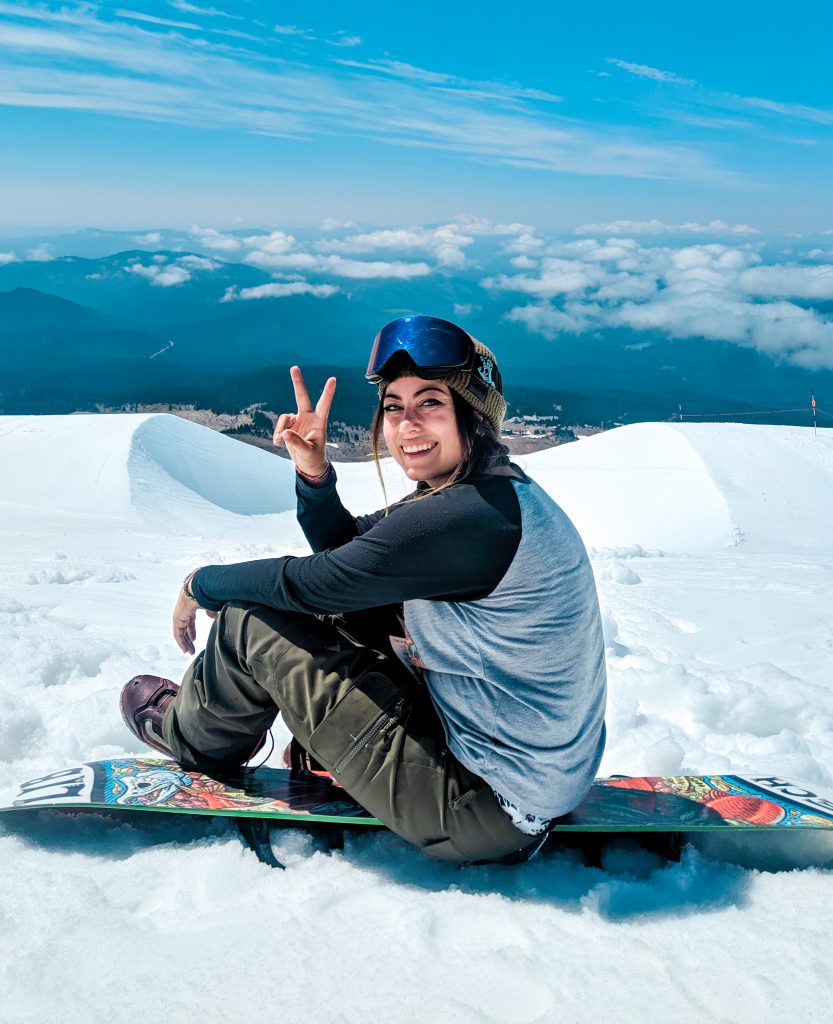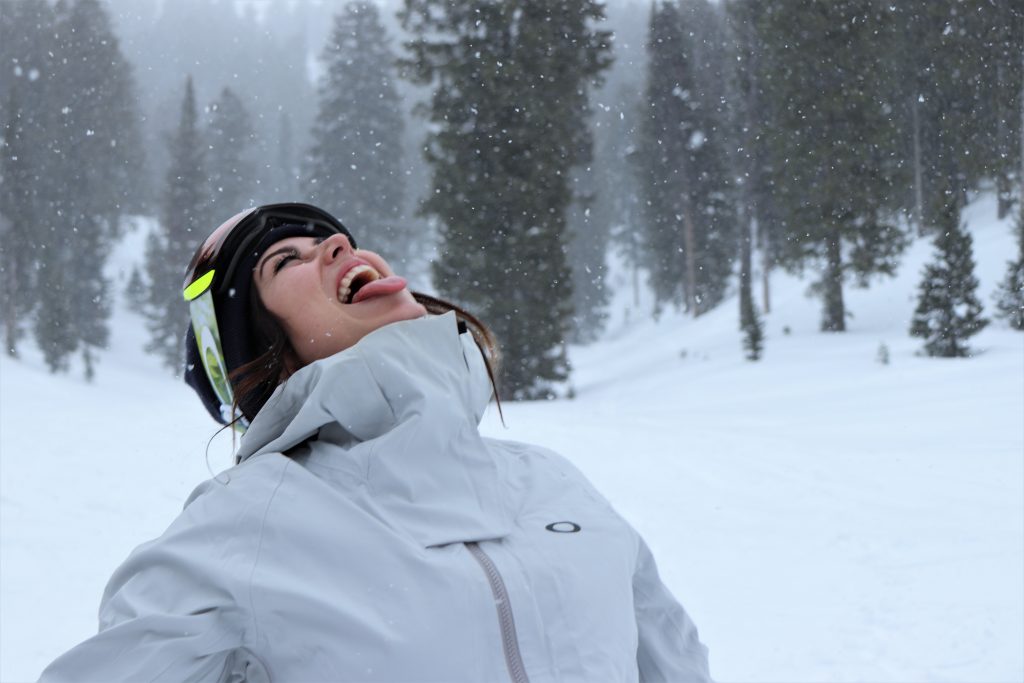
Snowboarder Jenise Spiteri takes a break from training in Switzerland to speak to Adriana Bishop about how she achieved her dream to represent Malta at the Winter Olympics…
What is your dream? What’s stopping you from making it come true? Whatever it is, it cannot get more extraordinary than representing Malta at the Winter Olympics and that is exactly what Maltese-American snowboarder Jenise Spiteri has managed to achieve.
But do not think her journey to the Olympics was all sunshine and fluffy snow in picture postcard scenery.
By some happy coincidence that was indeed the setting of our interview in the Swiss ski resort of Laax a couple of weeks ago.
It was a welcome reprieve for Jenise after a tortuous decade of long hours of training in sub-zero temperatures, competitions all over the world, expensive lift passes and coaching sessions, so expensive that she spends several months of the year sleeping in a freezing van to save on rent and often hikes up the mountain carrying her snowboard on her back to skip paying for the ski-lift in order to have enough money to pay for a coach.
“It sucks,” she concedes. “But there’s nothing I can do about it. It makes me stronger and tougher.”
When you want something badly enough, you do whatever it takes to achieve it. And Jenise wanted this very badly indeed.
As we sit down on her upturned snowboard on the side of the piste I am immediately struck by the sheer strength of will in this petite 29-year old woman with blue-green plaits and wide, captivating smile.

She had been training for six hours already that day, alone, with no coach or anyone to give her feedback or motivational pep-talks.
“I talk to myself,” she says with a wry smile.
The halfpipe at Laax is considered to be the best in the world so much so that the one created for the Winter Olympics at Genting Snow Park in Zhangjiakou, 190km northwest of Beijing, is modelled on the Swiss one.
I watch Olympic snowboarders from Japan, Germany and Australia take turns to practice their moves at the Laax halfpipe surrounded by their entourage of coaches and support staff. Jenise meanwhile stood alone among them all, determined, defiant, focused, fuelled by Oreo biscuits and a hunger to smash her goals.
Born in San Francisco to a Maltese father and an American mother, Jenise grew up on an ice-skating rink watching her mother, a former professional figure skater, coach future skating stars.
Her father George Spiteri had taken over the celebrated pro-favourite ice-skating boots company SP-Teri from his father Joseph who was originally from Ħamrun and had emigrated to the US from Malta with his wife soon after World War II.
Jenise was “performing” on ice-skates by the age of 15 months. But ice-skating was not her calling.
It was an advert for a summer snowboarding camp on a glacier that caught her eye during the holidays before 12th grade in high school that would light the spark. By then she had only ever skied five times in her life and had only ever been on a snowboard for three days.
“It was the first time I had ever seen sponsored athletes and I decided that’s want I wanted to be. That was my dream,” she recalls.
Up till then she was set on an acting career and had already planned to study acting at a university in Los Angeles. Instead she enrolled at the University of Sierra Nevada on Lake Tahoe, some 320km away from home, which is famous for its winter sports programme.
“When I applied to join the sports team they asked me for my latest competition results. I had never done any competitions at that point. I couldn’t even turn properly on the snowboard or jump higher than 1.5m,” she said.
Undeterred, Jenise took a semester off school and entered all the competitions she could. She had a lot to learn and she had to learn very quickly, trying out new tricks during the contest itself without any prior practice and hitting ever bigger jumps.
By the end of that first season she was on the podium for all the five events she had entered. It was only then that her father suddenly realised how seriously she was taking this.
A bursary from the Olympic Solidarity programme covers some of the considerable training expenses but comes “nowhere close to paying for full-time training. I have to tell coaches I cannot train with them every day because it is just too expensive. I have to choose where the money goes.
“There have been many times when I wanted to quit, when the obstacles became too much to handle but then I tell myself I had already put in so much into this sport. I have to find ways to work through the challenges.”

Spiteri even battled through a whole year of pain while recovering from a bad knee injury. She snowboards ten months of the year and the rest of the time enjoys skateboarding with her professional skateboarding boyfriend.
Most of the time she is so focused on the competition that she barely notices the surroundings. But occasionally she gets emotionally overwhelmed by the beauty of the mountains and appreciates how lucky she has been to have had the opportunity to travel the world while doing what she loves best.
“On competition days I am usually stressed and then sometimes I would be standing at the top of the pipe ready to drop in and I look at the mountains and I think wow, I am so lucky,” she says.
She may have been brought up half way across the globe from Malta, but Jenise feels as Maltese as she is American. The Maltese community in San Francisco is a large and closely connected one with regular gatherings and events for Maltese festas attracting hundreds of people.
Jenise recalled blissful summers in Buġibba with her many cousins “eating a few too many pastizzi” and sightseeing “all over the island” with her parents, although she regretted not having learnt the language.
“My dad only spoke to me in Maltese whenever I did something bad and my Nanna would exclaim ‘Madonna!’”
Sadly none of Jenise’s family or friends, or anyone for that matter, will be able to watch her in Beijing due to strict COVID-19 restrictions.
“When they announced that there will be no foreign audience allowed I felt huge devastation. It almost ruined the Olympics for me. I was really looking forward to having my parents there with me.”
Jenise is being accompanied by her coach and MOC Director of Sport Charlene Attard.
Qualifying run
Jenise will only get three practice sessions of two hours each on the Olympic halfpipe before the qualifying run on February 9.
Out of 24 athletes only the top placed six will proceed to the finals the next day.
While that halfpipe may have been modelled on the one at Laax, any difference in the angles of the walls, even if just a few degrees, can affect how you ride it. The pipe will be created out of artificial snow which is already raising concerns over safety issues as the substance creates harder, faster surfaces.

Having missed out on a first chance to represent Malta at the Olympics four years ago, Jenise is determined to do Malta and herself proud this time.
“I hope I can ride the pipe to the best of my abilities and if when I finish I feel I have done well then I’ll be really proud of that. I only get two tries. I don’t want to stress. I want to enjoy it.”
The announcement of a Maltese athlete representing Malta at the Winter Olympics always raises bemused eyebrows.
But Jenise believes nothing should stand in the way of fulfilling your dreams, not even the lack of snow.
“A lot of people feel they are limited by the island. I had to move away from home in order to pursue my dream. It is not so difficult to fly to Milan for example and drive to the mountains. It’s a pity the ice skating rink was closed down. Maybe Malta could have had a figure skater by now at the Olympics. It seems sports is not considered a career in Malta.”
China’s Olympics rules state that the athletes must leave the country within 48 hours of finishing their competition.
So what awaits Jenise after Beijing? “Freedom,” she laughs.
“I’ll be able to choose which mountain to visit rather than travel purely for contests.”

Spiteri admits she’s had enough of cold weather and joked that if and when she has any children, she’ll most likely introduce them to surfing rather than snowboarding “so I can be the mum sitting on a beach not a cold piste.”
And perhaps another attempt at the Olympics in four years’ time? She wouldn’t rule that out.
What is a halfpipe?
Snowboarding’s most famous contest, the halfpipe, is performed in a half tube of snow with walls up to 6.7m high and slopes between 16 and 18 degrees which is enough of a pitch for snowboarders to maintain their momentum.
Snowboarders “drop in” by entering the upper end of the pipe at high speed from either the left or the right side, using that speed to ride up the opposite wall and into the air to perform spins, flips or board-grabbing tricks before landing back into the pipe.
Athletes are judged on the technical difficulty of the tricks, execution, height and style.

World Cup News
-


FIFA World Cup
/ 1 week agoUruguay end winless run with dramatic late win over Colombia
Manuel Ugarte grabbed a dramatic last-gasp winner as Uruguay ended a five-match winless streak...
By AFP -


FIFA World Cup
/ 1 week agoArgentina fall in Paraguay, Brazil held in Venezuela
World champions Argentina suffered a 2-1 defeat to Paraguay while rivals Brazil were held...
By AFP -


FIFA World Cup
/ 1 month agoLenovo become FIFA’s World Cup ‘technology partner’
Chinese technology company Lenovo have signed a sponsorship deal with FIFA that covers the...
By AFP -


FIFA World Cup
/ 3 months agoVinicius says Spain should lose 2030 World Cup unless racism declines
Brazilian striker Vinicius Junior has called for Spain to be stripped of its 2030...
By AFP

English football
Amorim predicts Man Utd pain as he faces up to huge task

Horse Racing
First win of the year for Caprice De Cosse

English football
Man. Utd held by Ipswich in Amorim’s first match in charge

































1 Comment